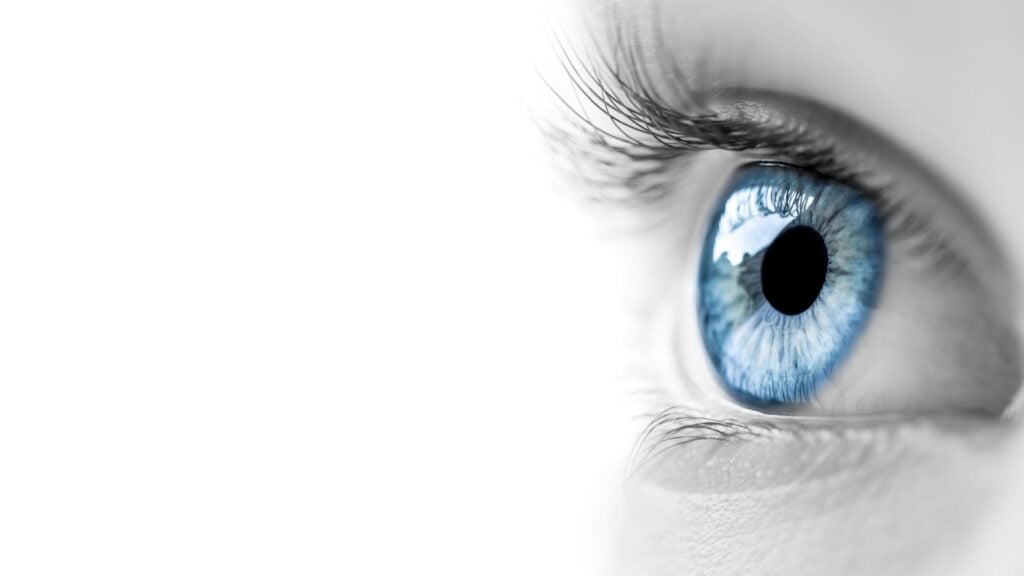
Spectacular Sight Starts with Healthy Eyes
Vision is likely our most prized sense. Without it, we would be unable to do many of our favorite activities, including seeing, reading, painting, driving, viewing television, and more. Nonetheless, it is a sense we frequently neglect and must attend to.
Although changes in eyesight are often out of our control and will inevitably worsen with age, we typically take steps to actively improve our vision, such as taking supplements or engaging in eye exercises. Nevertheless, there are a number of behaviors that may be detrimental to your eyesight. Numerous aspects of our daily lives pose risks to our eyesight, but these seven behaviors are the most prevalent and easiest to avoid.
There are steps we can take to preserve our vision if we refrain from engaging in certain behaviors. In this article, ophthalmologists affiliated with Sirwiss discuss the changes in vision and eye health that older adults should be aware of, as well as the best methods to protect your eyesight.
These Things You Do May Damage Your Eyes
You do not have a great deal of control over your visual acuity. Thanks to the genetic lottery, most of us wind up with perfect 20/20 vision at birth. Then some are born with terrible eyesight that practically begs for Lasik, or some other solution.
There are numerous everyday activities that could leave you with dry, irritated eyes, infections, or even something worse, such as swimming in your contacts or smoking. Neglecting your eye health can negatively affect your acuity in the long run (beyond the discomfort). To keep your eyes as healthy as feasible, please refrain from the following immediately.
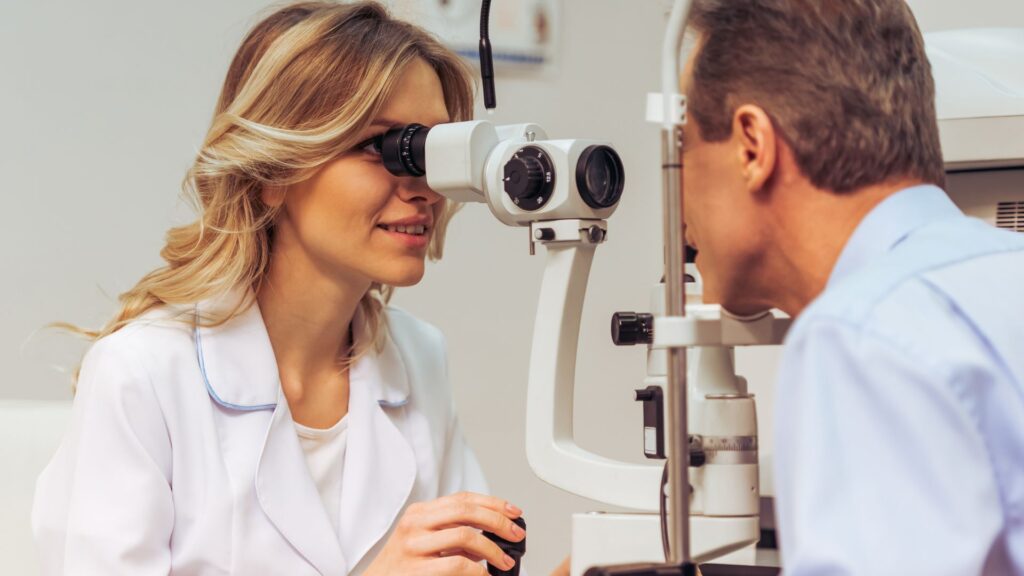
1. Rubbing Your Eyes
When you massage your eyes, you may feel a momentary sense of relief, but you are also spreading contaminants such as bacteria into your eyes. This is how you transfer pathogens to your eyes, typically the bacteria that causes pink eye.
Eye rubbing has been associated with permanent corneal injury, such as disorders known as keratoconus, in which the cornea thins and begins to bulge outward, and it can also break the fragile blood vessels surrounding the eye.
It is also essential to note that if you feel something in your eye, attempting to remove it by rubbing may cause the debris to become lodged deeper in your eye. Instead, attempt to blink rapidly to wash away your tears. If that does not work, place a few “eye drops” in the eye to cleanse it.
2. Wearing Old Contact Lenses
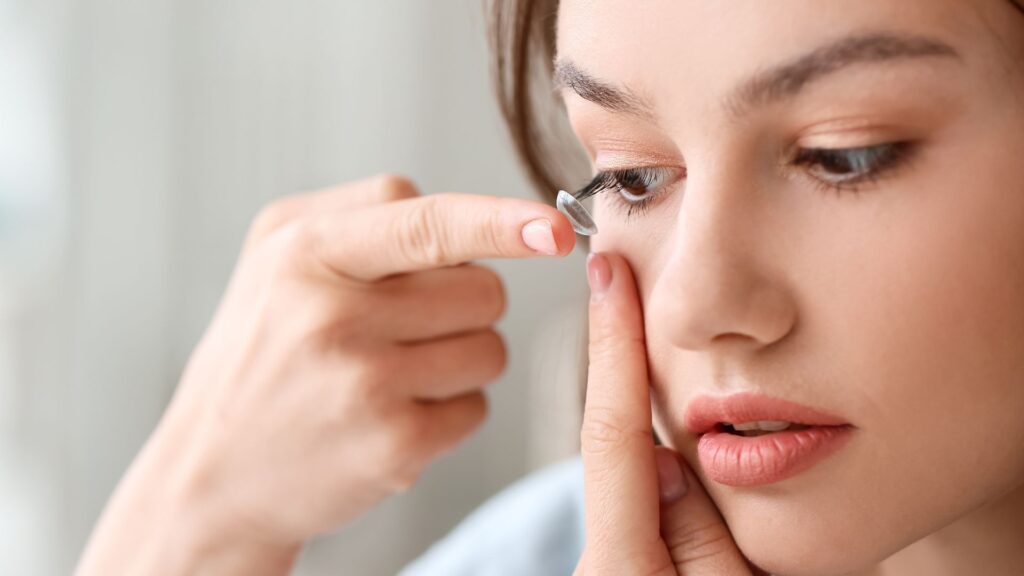
If you continue to wear your one-day contact lenses on day two, you increase your risk of developing an infection. People have a tendency to wear their contact lenses for much longer than intended, particularly for more than one or two days. When it comes to maintaining healthy eyes and avoiding vision-obscuring infections, sleeping in your contacts, sharing contacts with others, and not changing your contact case every few weeks are all significant offenses.
3. Wearing Contacts in the Pool or Shower
If you wear your contacts in the shower, the pool, or the ocean, germs or even an acanthamoeba might potentially enter your eye. Although uncommon, these bacteria can cause a serious illness, and in extreme cases, blindness, if it enters the eye through scratching or sand. In addition to causing infections, something like this can severely impair your eyesight.
4. Forgoing Safety Goggles
Wear those silly goggles whether you’re mowing the lawn or tackling a DIY project around the house. You might feel ridiculous, or this may seem like an excessive safety measure, yet it’s important to remember that many people sustain eye injuries while performing common household tasks like cleaning with toxic chemicals. Consider the potential consequences before trying to accomplish something around the house that you don’t have the skills for. Furthermore, studies show employees may get eyes injured on the job when the safety measures for eyes are ignored.
5. Staring at a Smartphone All Day

There’s a physiological explanation for how prolonged screen time can tire out your eyes. Blinking less often is a natural response to the effort of reading little text on those tiny screens bathed in blue light. Reduced tear production is associated with a slowing blink rate. Vision becomes hazy when dryness and fatigue set in without proper lubrication. Your eyes may feel tired and blurry for several hours, and you may get a headache from it. The rates of nearsightedness around the world may be increasing, and there is mounting evidence that greater time spent in front of screens may cause permanent damage to the retina.
Experts in Ophthalmology propose the “20-20-20” guideline to reduce eye strain from prolonged computer use. You should take a 20-second break every 20 minutes to glance away from the screen and focus on anything at least 20 feet away. Your eyes will appreciate the rest and the chance to readjust.
6. Forgetting to Wear Sunglasses
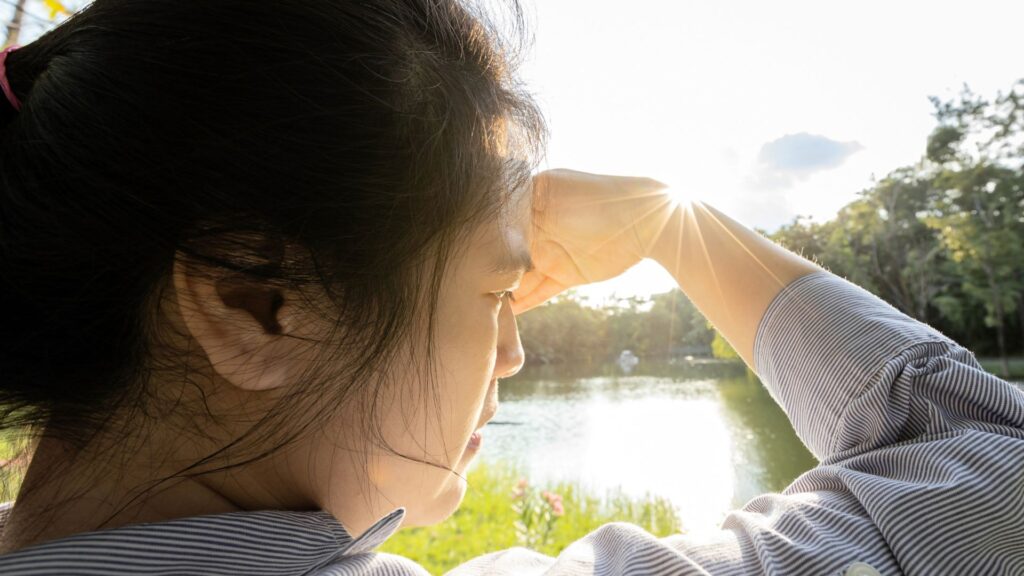
Extensive time in the sun can cause cataracts and other serious eye disorders by causing damage to the retina. Sunglasses with UV protection are a necessity while spending time outside. So, before venturing outside, always remember to pull your sunglasses out of your bag. Some brands of contacts even include built-in UV shielding, so it’s important to do your research before purchasing.
7. Smoking
Cataracts and age-related macular degeneration are two eye conditions that can be negatively impacted by smoking. Age-related macular degeneration, as explained by specialists, is damage to a little area of the retina responsible for clear, center vision. Your eyesight will eventually fail if this retinal layer starts to weaken. Smoking actually doubles your risk of having the illness, and it is the primary cause of eyesight loss among those over the age of 50.
8. Expired Eye Makeup

It may hurt to throw away your favorite mascara since it’s past its prime, but it’s better to be safe than sorry. Using old eye makeup might cause irritation to your contact lenses or even an infection. The American Academy of Ophthalmology recommends throwing away eye makeup after three months. Mascara may be stored between six and nine months, and eye shadows for much longer, although it’s safer to err on the side of caution. A decent rule of thumb is to toss it out when it starts to get clumpy. Don’t add water; doing so would provide bacteria with an ideal breeding ground.
9. Having Untreated Sleep Apnea
The effects of sleep apnea extend beyond increased fatigue. Sleep disturbances can directly cause eyesight loss and can also contribute to the development of related illnesses like glaucoma. Sleep apnea sufferers have a 1.67-fold increased chance of developing glaucoma within the first five years after diagnosis, according to a study published in the journal Ophthalmology in 2013.
10. Untreated Diabetes
It’s possible for diabetes to damage both the anterior and posterior segments of a person’s eye. The chance of getting cataracts is increased by a factor of two to five in people with diabetes, the risk of developing open-angle glaucoma is increased by a factor of nearly two, and the risk of developing diabetic retinopathy, which can cause vision loss and, in severe cases, permanent blindness, is increased.
11. Relying on Redness Drops
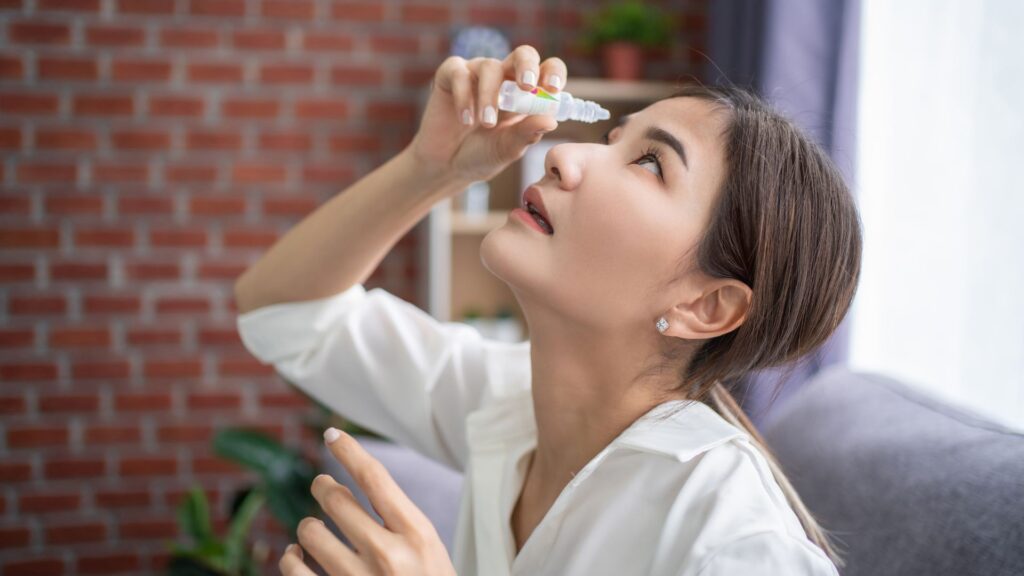
Use of redness-reducing eye drops after a night out can make all the difference between looking like a red-eyed monster and looking human. But if you use that little miracle worker too often, it could end up hurting you. Drops that claim to “take the red out” may have the reverse effect if used excessively, leading to even greater redness. Overuse of the drops, which act by narrowing blood vessels, might cause a rebound of redness. If you want to prevent looking bloodshot, use artificial tears and get more sleep.
12. Eating an Unbalanced Diet
Neglecting your diet or not getting enough of essential nutrients might have major consequences for your eyesight. For instance, vegans who are concerned about going blind from a lack of vitamin B-12 should take supplements. To add insult to injury, “excessive alcohol intake” and “[certain] medical conditions” can “reduce vitamin absorption” and increase the risk of blindness, as mentioned by experts.
Common Signs of Aging Eyes
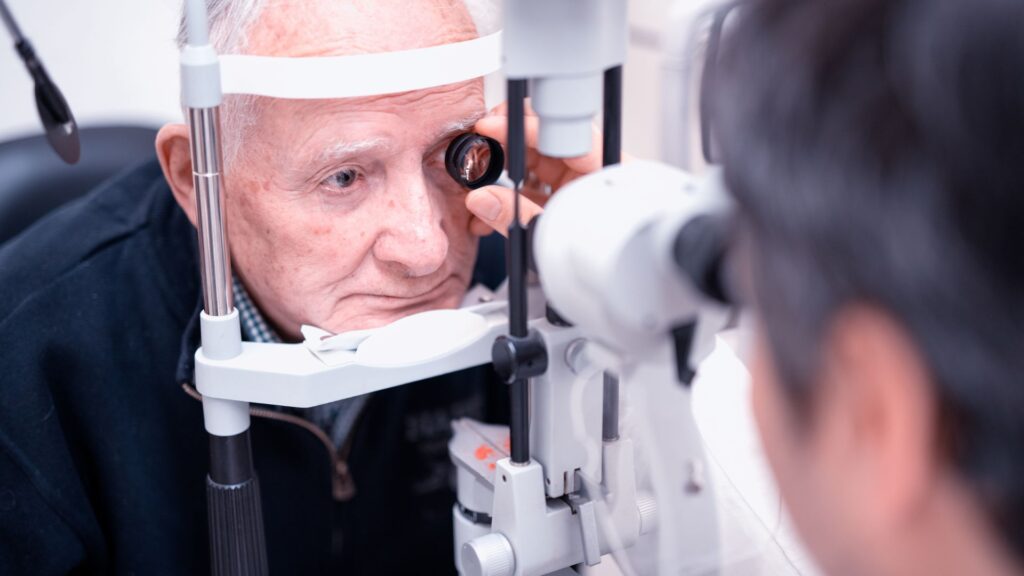
1. Trouble reading fine print
After 40, presbyopia typically sets in for many people. This creates difficulties for close-up pursuits like reading or needlework. It is possible to correct nearsightedness with reading glasses, contact lenses, or refractive surgery. Even newer eyedrop drugs can assist improve near vision in presbyopia sufferers.
2. Difficulty seeing at night
It may take older people longer to focus and acclimate to the dark than it did when they were younger. Rod cells, which are important for seeing in dim lighting, are thought to decline in strength with age. That’s why it’s more challenging to drive at night or in bad weather. The NTSA advises senior citizens to limit their driving during the daytime hours.
3. Dry eyes
Less crying is normal in the elderly. Dry eye is an irritating disorder that affects the eyes. Menopausal women, in particular, tend to suffer from dry eye. The most effective therapy for dry eyes is one that your ophthalmologist advises.
4. Objects blending into backgrounds
Milk in a white cup is an example of how it could become more challenging to differentiate between an object and its background. This is a decrease in the ability to distinguish between different colors. Using low-vision tactics, such as decorating with complementary hues, can help.
5. Red, swollen eyelids
Inflammation of the eyelid, often known as blepharitis. Hormonal shifts make blepharitis more likely as we get older. Redness, swelling, crusting around the eyelashes, and pain are all symptoms.
6. Spots or floaters in your vision
Age can cause changes to the vitreous, the jelly-like fluid that fills the middle of the eye. This can lead to the formation of floaters in the form of small clumps of gel. This is normally safe to do. Consult an ophthalmologist if your number of vision problems increases unexpectedly.
7. Flashes of light
Flashes of light in the periphery of one’s vision are a common symptom of aging. When the vitreous pushes or pulls on the retina, a flash of light may appear. Talk to your eye doctor if the number of floaters in your vision has suddenly increased.
8. Glare sensitivity
Aging adults with certain eye conditions can become increasingly sensitive to glare. Good ways to lessen the discomfort are to:
- adjust lighting around the house,
- cover your eyes with sunglasses and a wide-brimmed hat while outdoors, and
- use a matte screen filter on digital devices.
9. Cataracts
Cataracts affect one-fourth of the world’s population over the age of 75. A cataract forms when the normally clear lens of the eye becomes clouded. Surgery is an option for cataract treatment.
10. Age-related macular degeneration (AMD)
AMD is a prevalent eye condition that often affects people over the age of 50. In the first stages of an illness, the patient may not have any noticeable symptoms. However, central vision does deteriorate over time. Different forms of AMD require different treatments.
11. Glaucoma
Although glaucoma is more common among the elderly, it can affect people of any age. If the disease is not treated quickly, it can cause permanent damage to the eye’s optic nerve and eventually result in blindness. It’s common for people to miss the signs. The best approach to prevent vision loss is to get regular eye checkups.
12. Diabetic eye disease
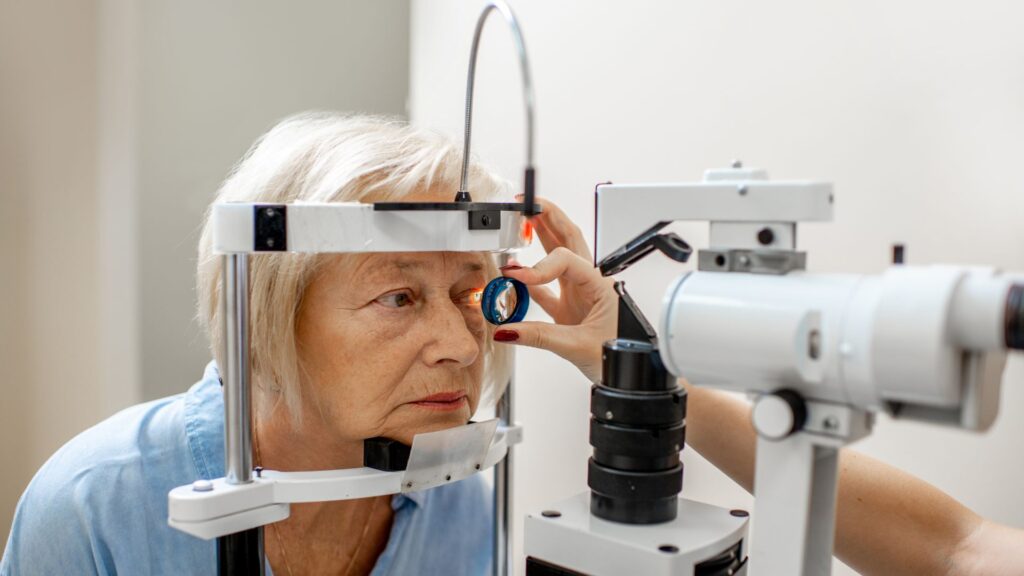
One of the most common causes of blindness in adults is diabetic retinopathy. Retinal blood vessels are vulnerable to injury at high blood sugar levels. This injury results in total blindness. Diabetic retinopathy can be treated in a number of ways.
13. Eye cancer
Ocular melanoma is the most prevalent type of eye cancer, but it is extremely uncommon. Ocular melanoma is a type of skin cancer that can spread to the eye. This emphasizes the significance of having regular eye exams for the early detection of cancer of the eye. A dilated eye exam is the first step in diagnosing ocular melanoma.
14. Falls can cause vision-threatening injuries
As we get older, our balance and eyesight naturally decline, making falls more likely. Serious injuries, especially those to the eyes, can result from this, and they typically occur in the home. Preventing falls at home is as easy as making a few minor alterations, such as:
- cushioning sharp corners of furniture and home fixtures,
- securing railings, and
- making sure rugs and mats are slip-proof.
15. Poor sleep
There is evidence that our ability to take in blue light decreases with aging. This explains why our bodies produce less melatonin as we age, which can mess with our circadian rhythms. It has been hypothesized that glaucoma and diabetic eye disease patients are more likely to experience sleep disturbances.
How to protect your eyes — and your overall health — as you age
16. Health problems might show up first in your eyes
Having your eyes checked regularly is vital to your overall health. Several disorders, including high blood pressure, high cholesterol, vitamin deficiencies, and others, can be discovered in their early stages by examination of the eyes. Dementia in the elderly can sometimes be diagnosed by a simple eye exam.
17. Knowing your family’s health history can protect your future
Knowing your personal risk factors is crucial in avoiding potentially blinding eye illnesses. Talk to your eye doctor about your risk factors, including your family history, race, age, and more.
18. Healthy living is especially important as you age
Maintaining a healthy lifestyle through regular exercise and nutritious diet is as vital now as it has ever been. As you get older, this becomes more apparent. Protecting your eyes from diseases like diabetes and obesity is a bonus.
19. Low vision tools can help
Aging does not necessarily lead to a decline in eyesight. However, low vision aids can ensure continued autonomy for those whose eyesight has been compromised by disease. Tools might be as simple as a magnifying glass or as complex as a smartphone app that reads text out loud. The advice given by a low vision rehabilitation team is tailored to the individual.
20. Prepare for exams when caring for people with Alzheimer’s and dementia
It’s important to be well-prepared for eye tests if you’re caring for someone with dementia. Some helpful hints for caregivers taking a patient with Alzheimer’s or dementia to the eye doctor are provided below.
21. Plan to get your eyes checked more often as you age
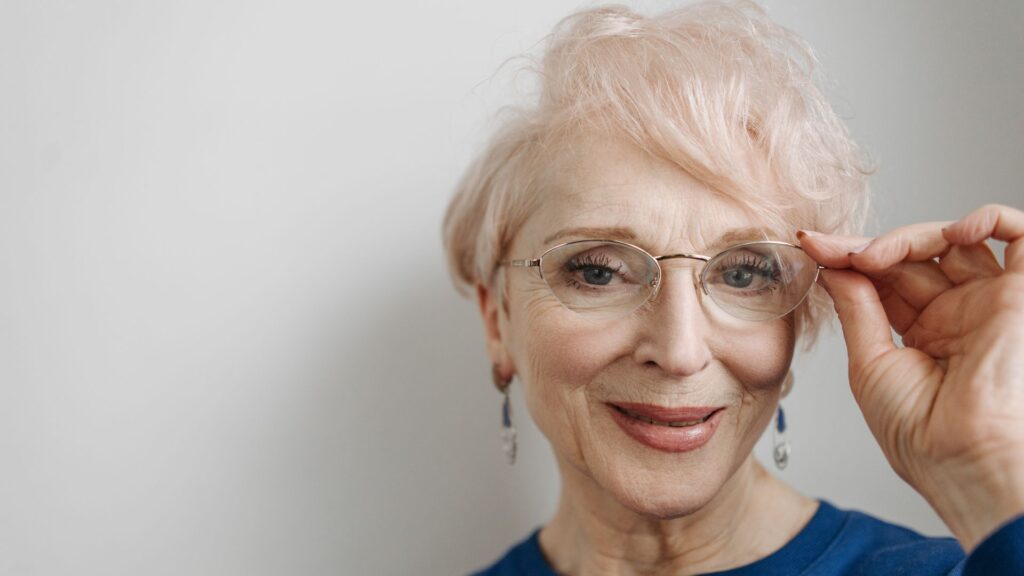
Expect to get dilated eye exams more frequently as you age to ensure your eyes remain healthy. All persons over the age of 40 should have had a comprehensive eye exam by an ophthalmologist, according to the Academy’s guidelines. Every one to two years, seniors over the age of 65 should schedule an appointment with an ophthalmologist.
Your eyes are a delicate part of your body, and you should treat them as such. Knowing what can cause damage to your eyesight is the first step in protecting your eyesight.